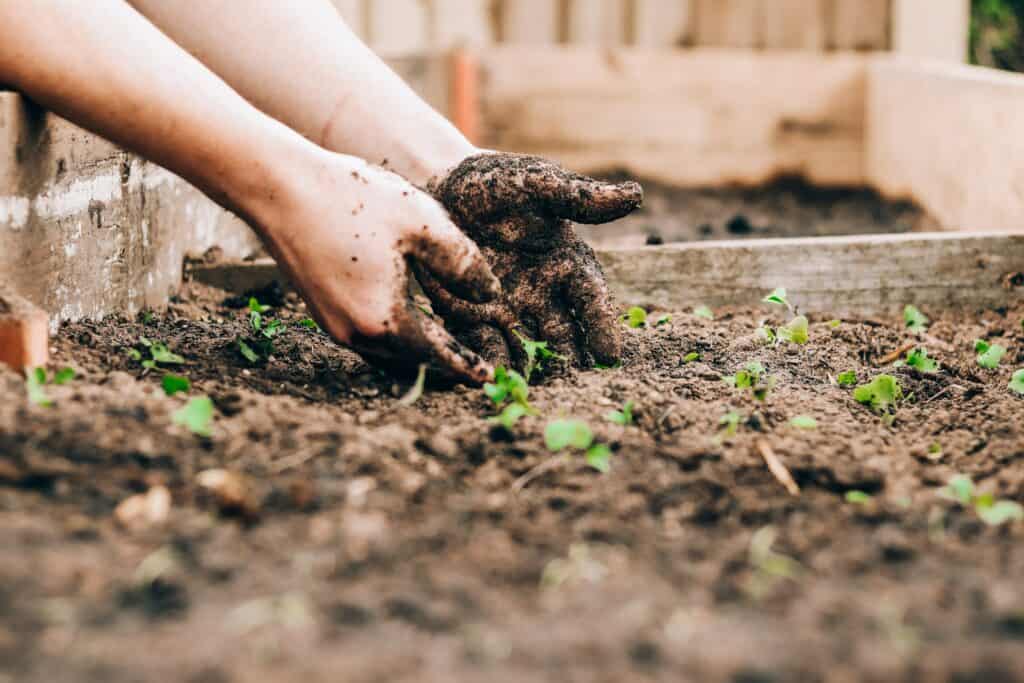
Getting Started By Clearing The Land
A couple of years ago a friend of mine got an allotment (that’s British for a small plot of land you rent from a community garden). It was completely overrun with weeds when he started clearing it in February. I decided to lend him a hand because he said he wanted to start a garden farm. If you need a little extra help, why not consider a garden subscription box?
We spent a few weekends in the spring digging it over, working in some manure and then planted a huge host of vegetables. It was wonderful fun. We both had one year old sons at the time. We’d dig a while, drink a little beer and watch our toddlers get very muddy. This is all going to be about outdoor gardens, but you should know that there are also indoor gardens.
Planting The Garden Farm, And Then … Set Backs
We planted masses of potatoes and onions, broad beans, runner beans, cabbage, leeks, purple sprouting broccoli, courgettes, rhubarb, corn . . . Then in May the heavens opened for about three weeks in a row. And the whole thing went to mush. These things happen, and you need to be prepared for it.
The potatoes and onions rotted (too late, too much rain, bad drainage), black fly got the broad beans, a dear ate the runner beans and caterpillars did the broccoli. All we had to show for the escapade by August was some lovely corn, a couple of giant marrows and some promising looking rhubarb.
You’ll Need To Put In Regular Time, Once A Week, Twice A Week
The whole debacle was utterly predictable of course. My mate was a hard working lawyer with a young boy. He was lucky to make it to the allotment once every two weeks. I wasn’t around much to help either and the space was just huge. It was the wrong vegetable patch for this point in his life. He literally had more produce from the small salad box I gave him as a consolation present.
Equipment For Starting A Garden
One of the most important pieces of equipment for starting a garden is soil and compost. Soil is the foundation for a successful garden and should be of good quality. Compost also helps to improve the soil quality and is full of nutrients. It is important to mix the compost with the soil for best results. Don’t assume that the soil in your yard is safe – it could be contaminated by many years of lead paint chips that fall in during home renovation projects.
Tools are also necessary for a successful garden. Hoes and shovels help to break up the soil and create the necessary beds for planting. Pruners are essential for trimming plants and keeping them at a manageable size. Rakes are used to level the soil, and wheelbarrows make it easier to transport soil, compost and other materials.
Watering and irrigation are also important pieces of equipment for a garden. Watering cans are used to water smaller areas, while hoses are great for larger areas. Sprinklers are used to evenly distribute water, while irrigation systems are more efficient and can be used to water larger areas. A extra garden hose water filtration system will reduce the amount of undesired contaminants that go into the soil and into your plants. All of these pieces of equipment help to ensure that plants get the water they need to thrive.
A Veg Patch For Your Life
When you start a new vegetable garden the most important thing is to choose the right garden.
The ideal vegetable garden for you looks unlike it does for anyone else. You’ve got a life, and your veg patch needs to fit that lifestyle and give you pleasure. Otherwise it simply won’t last.
So you need to choose a style of veg patch that matches your levels of enthusiasm, time and money, as well as your physical space and local climate. Personally I always think it is a good idea to start modestly and to build up. Because everyone has more enthusiasm for gardening in the spring than they do later on in the summer.
The following is a list of 8 types of home vegetable garden. A good garden for you is probably a hybrid of some of these elements. Mine certainly is. I hope they provide some inspiration.
1) The One Pot Herb Garden Farm
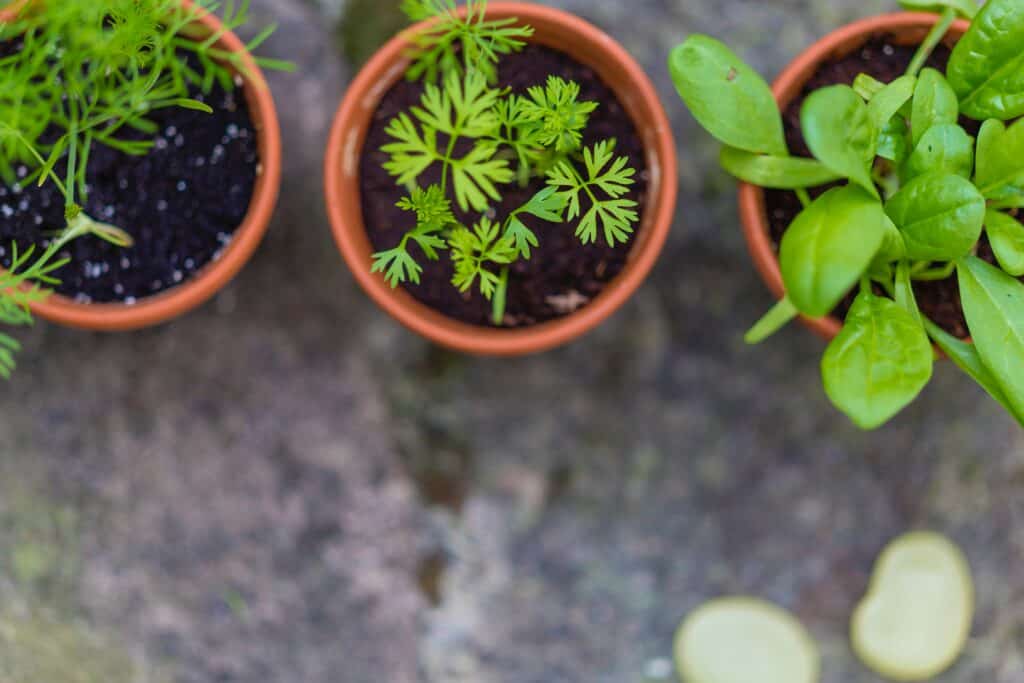
The one pot herb garden is easy, cheap, beautiful and low maintenance. It might not produce that much, but the variety can be superb. This one has basil, rosemary, lavender, mint, parsley, dill and chives.
If you are just a beginner don’t mess around with seed. Buy a mixed set of plugs, make sure the soil has decent drainage and stick it somewhere sunny you see a lot, so you remember to water. The kitchen window is ideal.
2) The Windowsill Garden Farm
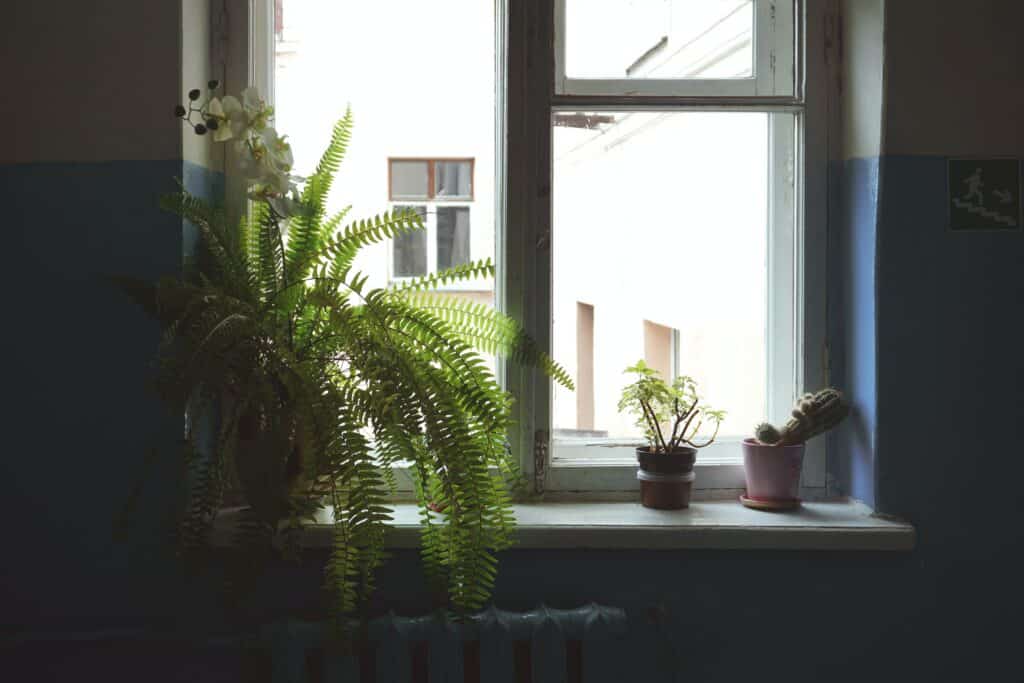
If you live in a flat, a windowsill garden (or balcony garden) could be great for you. Windowsills are superb places for growing stuff as they are often sunny, cool and have good airflow. They also tend to be quite contained which makes them fast and simple to water.
Herbs, salad, strawberries, peppers and hanging tomatoes are all ideal for this set up as their soil and space demands are limited. The windowsill is also brilliant for avoiding snails, slugs and other pests that you might get on ground level.
3) The Container Garden Farm
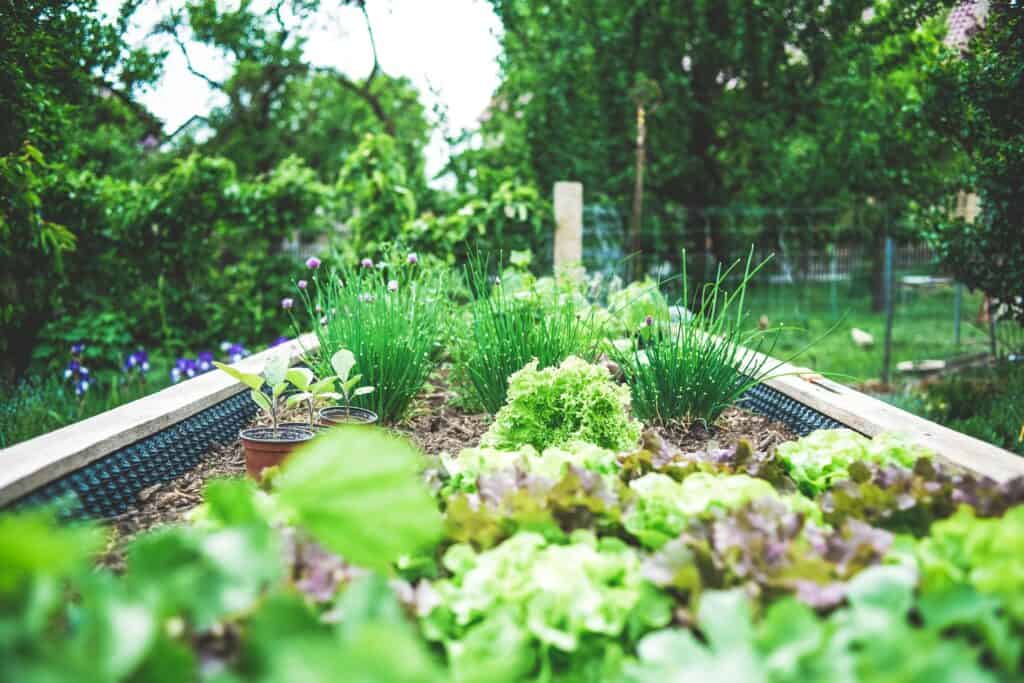
Container gardens are a super way to maximize both the yield and variety of food you can grow in a small space. If you are creative about it you can often get one going very quickly and cheaply by re-purposing old pots, boxes and crates to make functional growing space. They can also be really gorgeous because you get different heights and textures.
For people who are really busy ‘self watering planters’ are a good idea as you can get away with many more days without watering. The picture above is from VerticalVeg, a guy renowned for growing a lot in a small space.
4) The Square Foot Garden
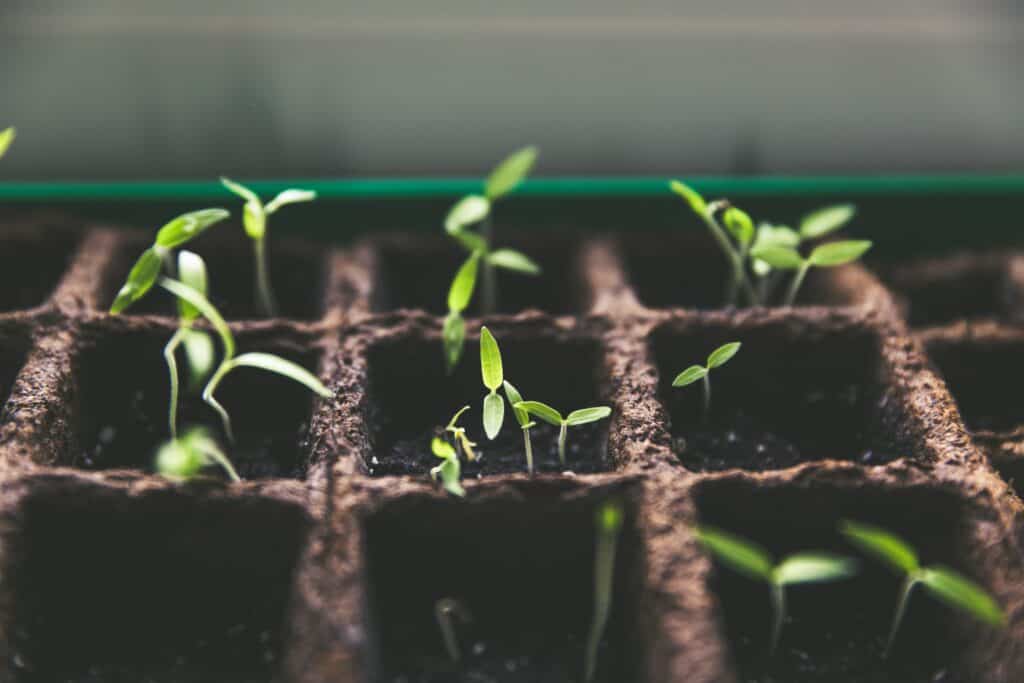
The square foot garden really is what it says on the tin. You build a small bed (often raised with good drainage) and divide it up into square feet. You can pot this up with little plugs, but most people tend to do them with seed.
I’ve never actually tried one of these myself but am quite tempted this year. You can grow a lot of variety in one space and watering is simple and fast. The example above is from The Wealthy Earth.
5) The Potager
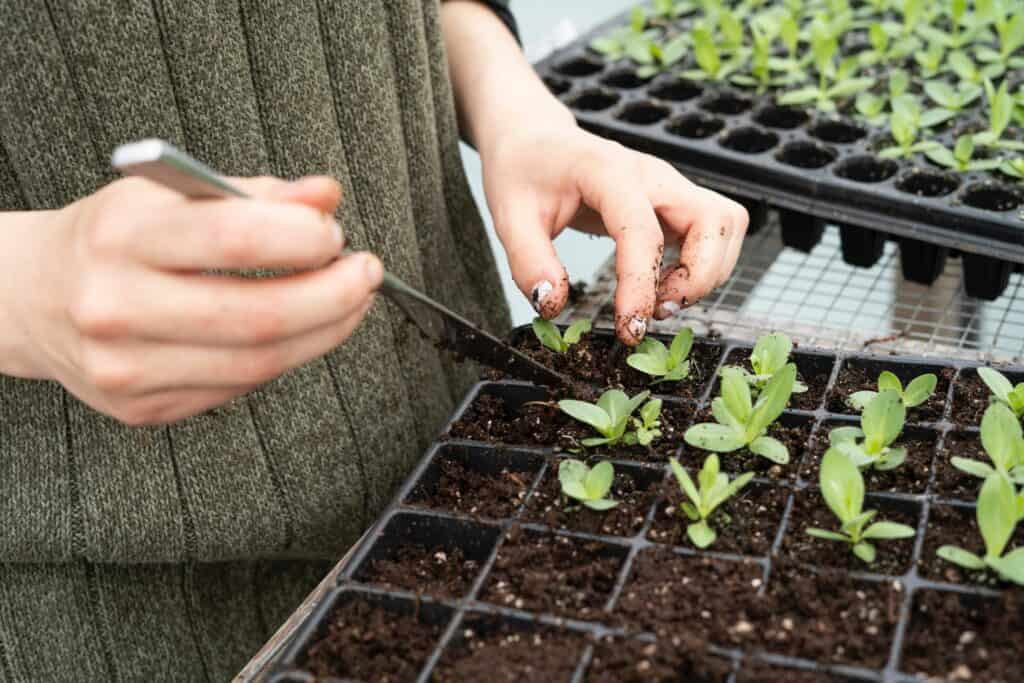
If you like form as much as function then a potager might be for you. The ‘jardin potager’ is the traditional French kitchen garden that incorporates herbs, veg and fruit as well as flowers, shrubs and structure.
The DIY version is simply to plant all your stuff in mixed beds and to make it beautiful. It really helps with motivation if it’s your view out of your kitchen window. The French . . . . ? Well they know a thing or two about kitchen gardens.
6) The Raised Bed Garden Farm
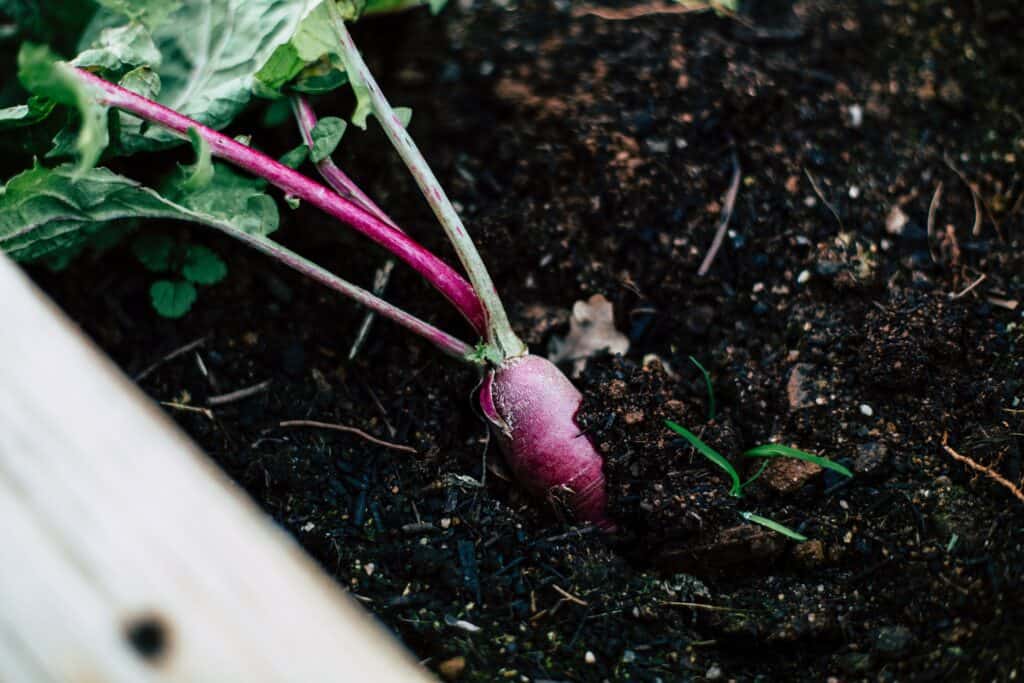
I think this is possibly the best option for newbies with some space. If you’ve got the time to spend then a raised garden bed is a fabulous investment. Two great things about them is that they stop you compacting the soil by walking on it, and they generally have better drainage.
You can grow most things in them. They are good to water and easy to weed. They are also super for crops that might need netting at some point, like carrots or broccoli. People seem to spend a fortune buying them, but seriously, it’s a few bits of wood. Just knock one up with something you can get cheap. This example is from Gardenista.
7) The Greenhouse
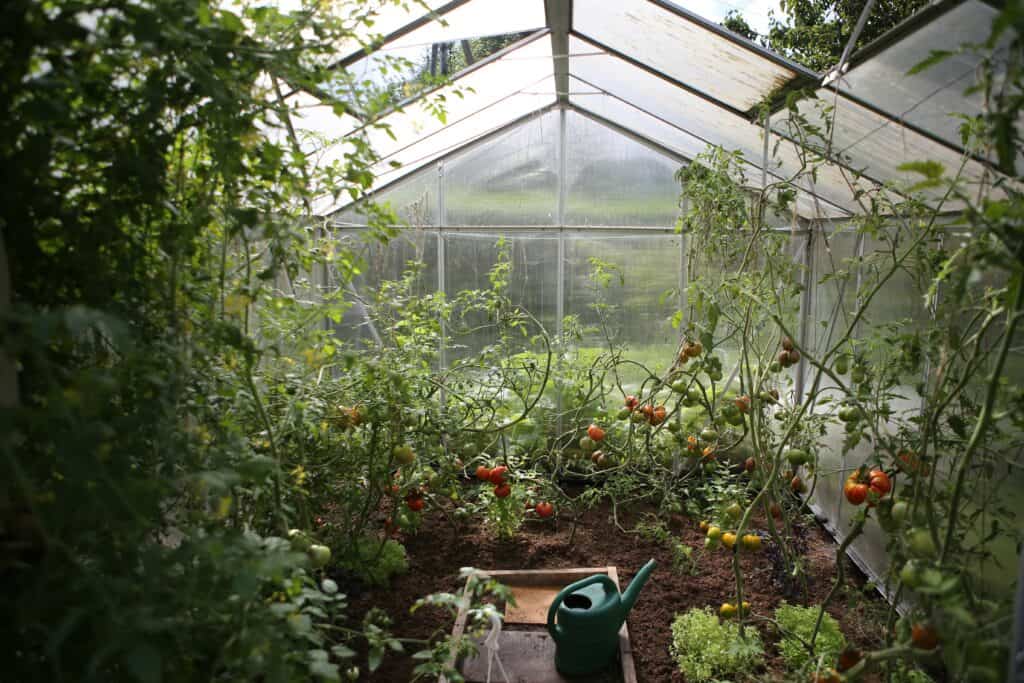
That’s me in my greenhouse last September filming a silly video about food waste. I’m surrounded by tomatoes, there’s eggplant and peppers to my left, some basil below me. None of these things can be grown reliably here in the UK without a greenhouse.
But a word of warming. If you can’t find time to water every day, a greenhouse is not for you. If you go away in the summer, someone needs to water. All the wonderful stuff you can grow in a greenhouse takes months of consistent loving and care. They can also cost a pretty penny, so you only want to go for one if you are really keen. But my word our tomatoes are heavenly! I had to overcome challenges when the tomato plants got too tall for their own good.
8) The Traditional Plot
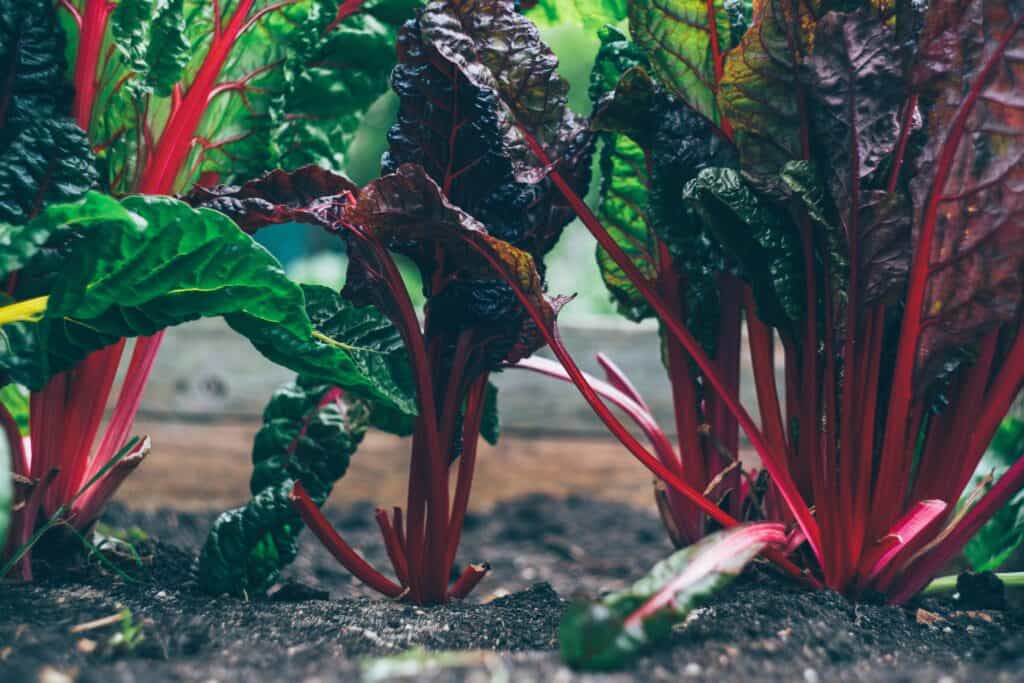
The traditional vegetable garden is the tradition because it is a cheap, easy and functional way to grow food. Their major feature is long rows of different crops. In cool climates you expect to see things like potatoes, onions, leeks, beans, zucchini, pumpkin, cabbages, broccoli, asparagus, carrots, beets, kale and corn (they should really be in blocks not rows). You will need to know good months to plant the seeds because there are optimal times for each plant. Pumpkin seeds for example need a lot of sun. You also need to ensure enough time is allotted for them to grow full maturity.
The spacing between rows is important. You want it to be wide enough to hoe for weeds and walk along, but not so wide it wastes precious space. A big skill in planting this way is to improve your soil each year by adding compost, manure and drainage where necessary. Rotating crops is also a feature of people who take it seriously.
Starting Your Garden
If you are just starting out and have limited time then why not think about growing some herbs and salads in containers. If you get a simple pack of herb and salad seedlings, one bag of compost (peat free) and some old containers you can have a veg garden in 30 minutes. And you’ll be eating it in just a couple of weeks.
If you are getting more serious about it then both containers and raised beds are a great way to set out your garden and limit the amount of watering and weeding you’ll need to do. You can grow all sorts in them! Finally if you’re lucky enough to have the space and time then why not consider a traditional bed of vegetables or try your hand at a greenhouse?
Check out our post on 7 Vegetables That Taste Better If You Grow Your Own for ideas on planting.
What type of veg garden are you going for this year?
Lindsay Wilson
I founded Shrink That Footprint in November 2012, after a long period of research. For many years I have calculated, studied and worked with carbon footprints, and Shrink That Footprint is that interest come to life.
I have an Economics degree from UCL, have previously worked as an energy efficiency analyst at BNEF and continue to work as a strategy consultant at Maneas. I have consulted to numerous clients in energy and finance, as well as the World Economic Forum.
When I’m not crunching carbon footprints you’ll often find me helping my two year old son tend to the tomatoes, salad and peppers growing in our upcycled greenhouse.
